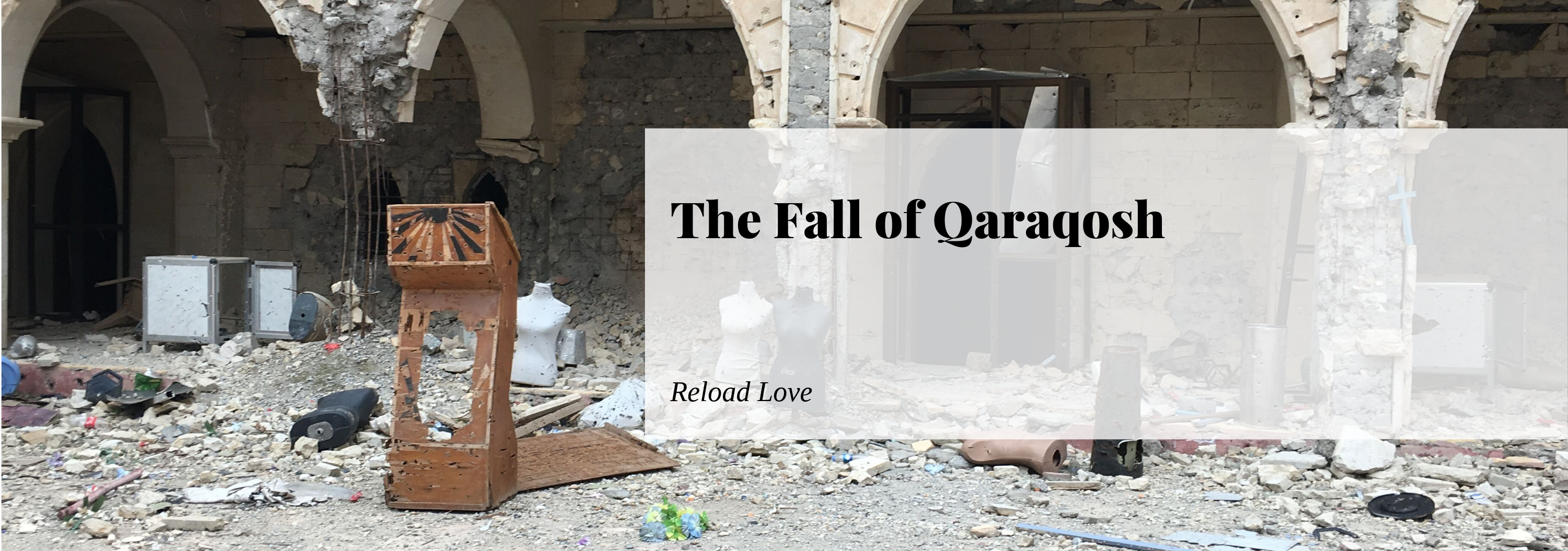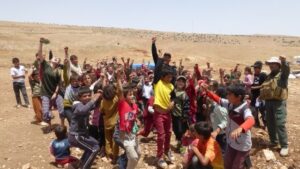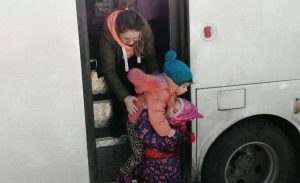The Fall of Qaraqosh
If a city could be raped, Qaraqosh would be that city. But, instead of wearing a stocking mask, her attacker was cloaked in the black flag of ISIS. That beastly army lurked outside this Christian city in a labyrinth of dark tunnels, waiting for an opportune moment to overtake its prey. Residents said, “One day no soldiers could be spotted and on the next several walked the streets.” Like any stalker, ISIS studied its victim, carefully mapping out her routines and detecting her vulnerabilities.
Before ISIS forced itself upon Qaraqosh, it cut off her supply lines of food and water, leaving residents weak and fearful. Next, the invading forces overtook the city’s protectors—the Kurdish Peshmerga Army—as they fell into retreat in just one night. The stage was set for the black army to have its way with Qaraqosh. ISIS had long lusted after the city known as Iraq’s Christian capital, whose residents still speak Assyrian—the language of Jesus. One refugee said, “They hate Christians especially. We don’t know why.” The Jihadists looked to feed their disdain for God’s people.
At dawn on Wednesday, August 6, 2014, a rocket obliterated three young women embedding fragments of their bodies onto a wall and the city streets. Rumors of children being beheaded flooded the internet from Europe to America. While church bells rang, the residents ran for their lives with a zero-sum ultimatum—convert to Islam or die. ISIS decimated the city with enough bombs, rockets, and gunfire to pummel her into a post-apocalyptic state the likes of Mad Max or The Book of Eli. I know this, because I walked the streets of Qaraqosh just days after her liberation and witnessed the destruction.
Before arriving in Qaraqosh, I had crawled through the now-infamous ISIS tunnels hidden in fields and under homes with my Reload Love team. The lingering smell of sweat throughout the dank, dark passageways triggered my fight or flight instincts as I became keenly aware of my surroundings. My imagination conjured up the wicked thoughts that had burrowed into the psyche of its previous occupants.
Later, as I walked through the newly abandoned city, a Peshmerga soldier pointed out graffiti scribbled on homes that threatened passersby about how the sword of Allah would cut their necks or how their infidel blood would water the great tree of the caliphate. Mind games—that’s what rapists do to their victims. They embed psychological damage into the hearts and minds of their victims, taunting, “I own you. I’ve left my evil seed in you. You’ll never forget this defilement.”
Traveling deeper into the city, I recognized more and more that the church is the heartbeat of this community. And that is exactly where ISIS has left its deepest scars. The Church of the Immaculate Conception—Iraq’s largest cathedral—had stood majestically in Qaraqosh for generations with its imposing stone walls. ISIS, knowing that stone walls don’t burn, concocted a flammable pitch to plaster on the walls, leaving black soot and an awful stench within the sanctuary.
Then the evil army built a bonfire in the courtyard reminiscent of Hitler’s pogroms, and fed it with Bibles and hymnals. Passing through, I watched as charred pages were swept up in the wind to float eerily in the air. At the opposite end of the courtyard, ISIS set up a shooting range using sacred furnishings—a pulpit, candelabras, and a nun’s dress form. I examined the pock marks made by bullets and picked up some of the brass casings in my hand. I was reminded of Daniel’s prophesy that the Jewish Temple would suffer a heinous event, the Abomination of Desolation, at the hands of her enemies. I felt like I was witnessing a precursor of that future desecration.
I met Father Roni in the adjacent residence sorting through the rubble. He and two nuns stood knee-deep in debris, searching for something when we stumbled into a storage room. Our interpreter, Shocker, a Bruce Willis lookalike, tried to comfort the trio, saying, “It’s okay; it’s okay. We understand what you’re going through. We are Christians.” But the look on Father Roni’s face told me that it wasn’t okay. How foolish we were to assume we understood what he was going through.
Father Roni looked back up as something in his hands came into full view. It was a purple flannel graph, the kind a Sunday school teacher uses to share Bible stories. On it were felt characters like Jonah or David. The priest calmly told us, “We will not hate. We will teach our children the love of God. We will show them how to forgive like our Lord.” He rooted through the aftermath of destruct on a mission of love.
Father Roni spoke of a day when the city would be swept for IED’s and booby-trapped bombs left in kitchen cupboards or a chest of drawers. A time when the orphans would return and a new chapter in their lives would unfold. I told him that as soon as we got home, a new flannel graph would be sent. We would pray for God to restore the city. We promised that when the children returned they would be greeted by a brand new playground from Reload Love. We believe that bullets and babies don’t mix. We fulfill the Lord’s admonition to “Let the little children come to Me.” We would create a playground in what was once a battleground.
We would begin to heal the scars with the three things a playground provides—the CAN-do plan.
- C stands for calm. We would ensure there was a safe space for children to gather, to hope. The climb higher kind of hope.
- A stands for acknowledgement. The parents, priest, and city elders would make sure that the trauma the children had experienced was acknowledged. The erroneous ideas the kids may have had, like it was their fault, or that they were bad children would be replaced by God’s truth that they were loved.
- N stands for normalcy. Trauma experts report that the sooner a child victim returns to normalcy, the greater their chance for full recovery. It could be a soccer ball, a classroom, or a bright, beautiful playground. It helps them to decompress and to dream.
Father Roni’s swift and fierce determination to teach the children of Qaraqosh to forgive and to love those who sought to destroy their lives and faith gives us a picture of hope after desolation. Please pray with us as we continue to stand with our Christian brothers and sisters in Qaraqosh.




